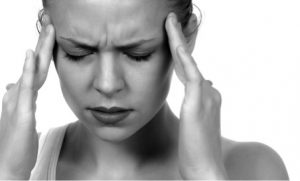There is more to a headache than just an ache in the head
 Headaches are one of the most common health complaints.
Headaches are one of the most common health complaints.
Today I want to provide a quick guide on types of headaches. Remember this is just a guide and there can be many causes of headaches, some more sinister than others so if you have sudden pain, a new type of pain or pain that persists see your doctor to rule out more concerning causes. Many headache types are treatable with physiotherapy particularly manual therapy, massage and training of the muscles that sit deep in the front of the neck.
Tension Headaches
Tension headaches are the most common type of headache. They present as a diffuse pain at the back and front of the head on both sides at once. The pain is often described as tight/ heavy feeling or a feeling of pressure. They are mild to moderate in severity and are accompanied by tightness and pain in the neck and upper back muscles. They often occur during or just after times of increased stress and/ or anxiety or due to sustained poor posture.
Physiotherapy can help treat tension headaches while you have one by releasing the tight muscles. We can also help prevent the occurrence of tension headaches by advising you on correct posture and helping you train your deep muscles to better support your neck and upper back.
Cervicogenic Headaches
Cervicogenic headaches also originate in the neck but specifically from the joints/ ligaments or muscles in and around the top 3 vertebra. They are an example of referred pain. The pain is felt in the head because the same nerves supply the structures around the top 3 joints as supply the back of the head and much of the face. Unlike tension headaches they usually only occur on one side of the head during an episode and are felt more specifically at the back of the head, the forehead or behind the eye. Certain neck movement or postures will make the headache worse and pressure over the top three neck joints will reproduce the pain. Like Tension headaches they can be related to posture but more specifically a forward head position where the head pocks forward in front of the shoulders putting a lot of compression pressure through the top three joints in the neck.
Mobilisation and or manipulation of the top three vertebral joints can provide relief from cervicogenic headaches and posture advice and strengthening can help prevent them from reoccurring.
Migraine Headaches
Like cervicogenic headaches migraines are usually felt in only one side of the head but unlike cervicogenic headaches they con swap between sides within the one headache period. They can vary in severity from moderate to severe and are characteristically accompanied by other symptoms such as nausea, visual disturbances and sensitivity to light and sound.
Migraines are triggered by different things in different people hormones, dehydration, tension, stress and anxiety can all play a part. If your trigger is related to stress and or tension physiotherapy may be helpful in treating your migraines.
Cluster Headaches
Cluster headaches are a less common but severe form of headache. They are felt as excruciating pain above or around one eye and though severe are usually only short lasting from 15 min – 180 min. They get their name because they usually occur 1-8x daily for a week or two and then will disappear for a period of time. Due to their severity most sufferers of cluster headaches will visit their GP. Cluster headaches are a neurological condition and are accompanied at least one autonomic symptom usually swelling around an eye, tearing, facial flushing or nasal drip.
So remember a headache is not just a headache – there are many different types. The most common types – Tension and Cervicogenic headaches are treatable and even preventable by physiotherapy.
So don’t suffer in silence or take Panadol after Panadol ….. make an appointment to visit us at MGS Physiotherapy and we will be able to diagnose your headache type, treat you when indicated or refer you on when needed.
